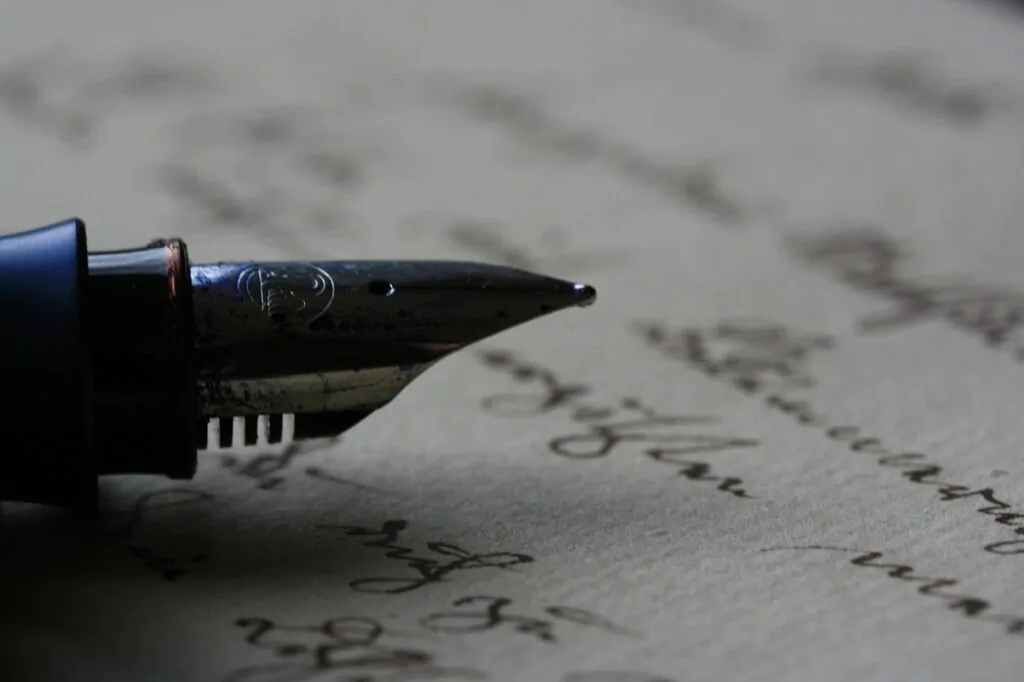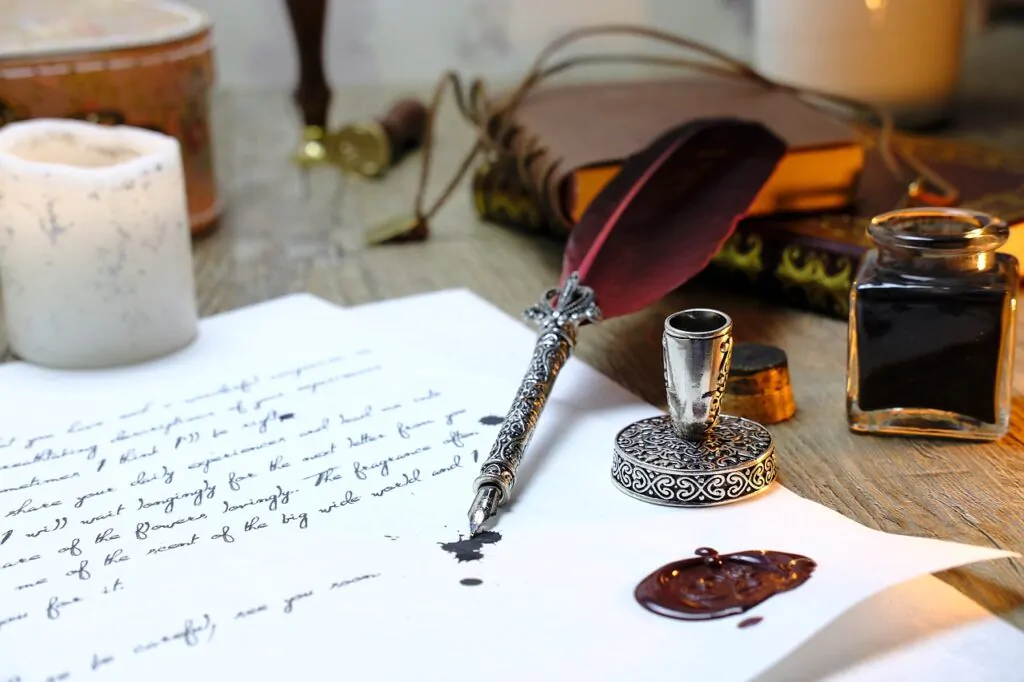Why write with a fountain pen? Discover why you should write with a fountain pen and what it can do for your craft.
I took a course from the British author Neil Gaiman several years ago. In this particular course and also in 2019 interview with Tim Ferriss, Neil describes writing early drafts of his stories and novels using a Lamy Safari fountain pen.
I was surprised that such a prolific author relies on a fountain pen, even though this type of writing is slower than typing or dictation. Then, I started writing with a fountain pen too, and I found that it offers several benefits for writers.
Contents
1. It’s a Break From the Screen

Writing with a fountain pen means you can sit down at a table with a notebook and a cup of coffee and focus on your words. You don’t have to spend time staring at a flashing cursor in a word-processing app or worry about issues like repetitive strain injury or the glare from your monitor.
Spending hours typing and editing at a screen become boring and repetitive, so it’s nice to do something a bit different, particularly if it’s a fun, creative project. You might also be wondering, why write in cursive?
2. It’s Liberating
Writing using digital tools is undoubtedly efficient and a great way to become a more productive writer. However, writing with digital tools is confining. You often find yourself working within the constraints of the writing app, software, and computer operating system.
It’s also possible to get easily distracted by the writing app too. I’ve often found myself tweaking settings and adjusting font sizes instead of writing. However, when writing with a fountain pen, you don’t have to worry about WiFi, running out of battery or the correct font. You can focus on the scratch of a fountain pen on paper.
3. It’s Ideal for First Drafts
First Drafts are challenging to write because often, a writer doesn’t know what it’s about until they put words onto the page. The flash of a cursor in Microsoft Word or another writing app can be intimidating.
However, when you open up a notebook in a coffee shop or a library and produce your fountain pen, you can scratch out the first draft without worrying about what others will think. Nobody is likely to read a first draft written in a notebook with a fountain pen.
You also don’t have to worry about finding a structure for your piece. Writing with a fountain pen enables playing with words. Later, you can always rewrite and revise it on a computer.
4. It’ll Improve Your Handwriting

Handwriting, like any skill, is something to practice if you want to improve.
If you want to improve your handwriting or practice writing cursively, what better way than writing with a fountain pen?
Cheap pens are painful to use and not much fun to write with, but if you buy a moderately priced fountain pen, you’ll find it a much more enjoyable writing experience and easier to improve your handwriting. That’s coming from somebody who has terrible handwriting.
5. It’s Good for Creative Thinking
The constraints of a computer are helpful when you want to turn something into a published work, like a blog post or a self-published book. However, a writing app places constraints on a writer.
Often more creative writers and creatives use processes like mind mapping or brainstorming. For these processes, using a fountain pen is ideal. You can move ideas around, tear up pages, and start anew without worry. It’s easier to think expansively by using analog tools. This may explain why authors like Neil Gaiman write early drafts with a fountain pen.
6. It Looks Good
Often writers like to keep all their notebooks, journals, and ideas as a type of archive. One example is master comedian George Carlin. After he died, his hand-written notes were archived at the National Comedy Center in the United States. They’re a treasure trove of scratched-out ideas, marked-up manuscripts, journal entries and Post-Is.
Carlin worked out his bits using analogue tools rather than digital ones. So if you’re a writer who likes to collect notes and ideas and build a personal archive, writing with a fountain pen is an excellent way to do it. It looks far better than a series of files saved on a computer.
7. It’s Fun

Writing with a fountain pen is a different type of experience compared to writing with a cheap biro or ballpoint pen. A fountain pen takes practice to use versus a regular pen. You must find the correct ink and hold it in a certain way to avoid inky streaks on the page.
Writing with a fountain pen makes a pleasing sound as you run the tip across a paper or a notebook. So if you’re looking for a fun, creative activity and are not worried about hitting a word count, consider using one.
Writing with a fountain pen doesn’t mean abandoning digital tools. You could write the first draft with a pen and then rewrite it on a computer. Or, like Carlin, you could mark up proofs and ideas with a fountain pen.
If you’re looking for some recommendations, check out our guide to the best writing pens.